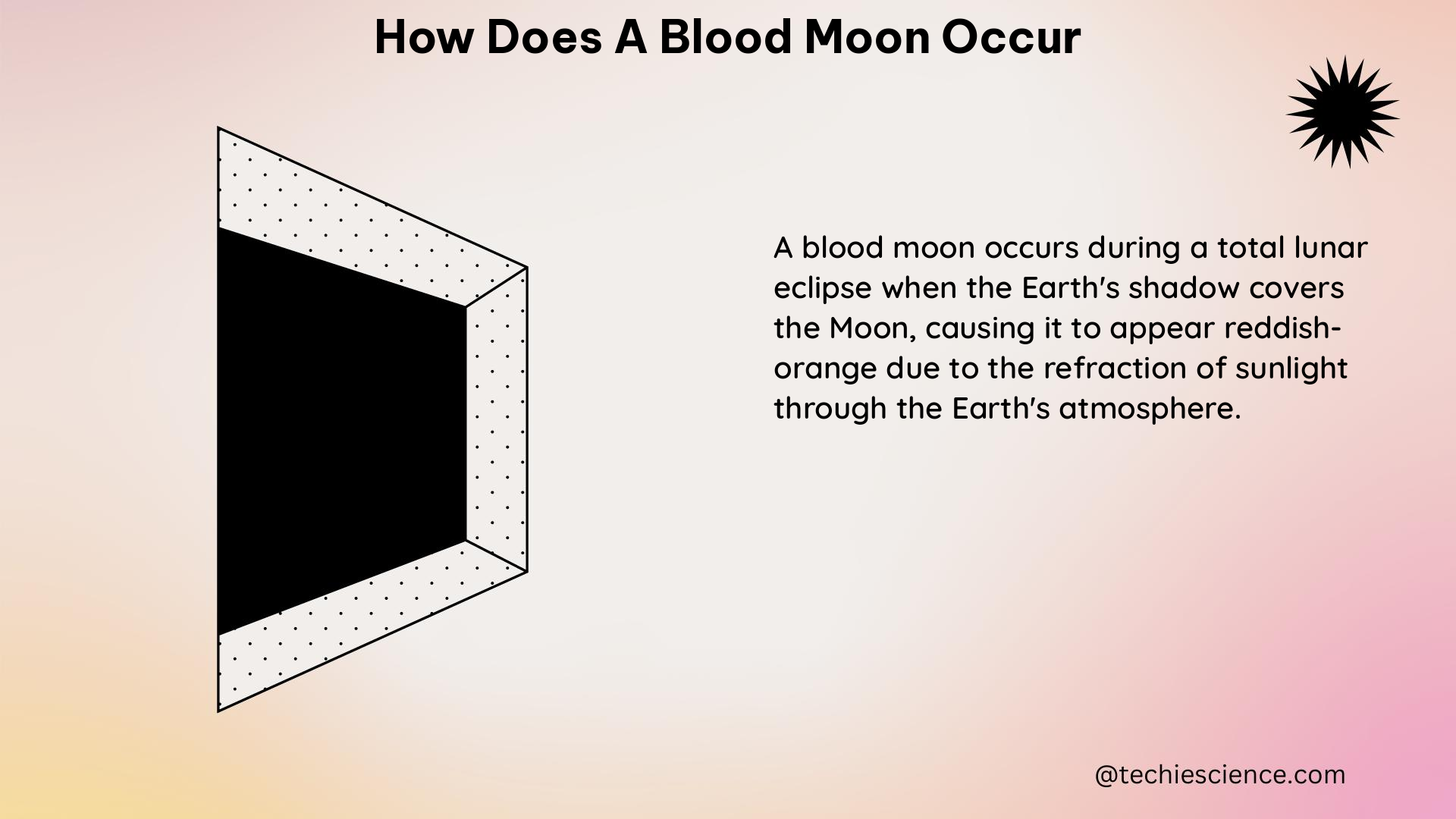A blood moon, also known as a total lunar eclipse, is a captivating astronomical event that occurs when the Earth’s shadow completely covers the moon, causing it to appear reddish-orange in color. This phenomenon is the result of a complex interplay between the positions of the Earth, moon, and sun, as well as the properties of Earth’s atmosphere. In this comprehensive guide, we will delve into the intricate details of how a blood moon occurs, providing physics students with a thorough understanding of this celestial event.
Understanding the Lunar Eclipse
A lunar eclipse occurs when the moon passes through the Earth’s shadow, which is cast by the sun. This happens when the sun, Earth, and moon are aligned in a straight line, with the Earth positioned between the sun and the moon. During a total lunar eclipse, the moon passes through the darkest part of the Earth’s shadow, known as the umbra.
The Umbra and Penumbra
The Earth’s shadow is composed of two distinct regions: the umbra and the penumbra. The umbra is the innermost, darkest part of the shadow, where the sun’s light is completely blocked by the Earth. The penumbra is the outer, lighter part of the shadow, where the sun’s light is only partially blocked by the Earth.
When the moon enters the umbra, it appears to turn a deep, reddish-orange color, which is the characteristic “blood moon” appearance. This color is caused by the refraction and scattering of sunlight through the Earth’s atmosphere, as we will explore in the next section.
The Scattering of Sunlight

The key to understanding the blood moon phenomenon lies in the way sunlight interacts with the Earth’s atmosphere. As sunlight passes through the Earth’s atmosphere, it is scattered by the various gases and particles present, a process known as Rayleigh scattering.
Rayleigh Scattering
Rayleigh scattering is a physical process in which the shorter wavelengths of light (such as blue and violet) are scattered more strongly than the longer wavelengths (such as red and orange). This is why the sky appears blue during the day – the blue light from the sun is scattered more by the atmosphere, making the sky appear blue.
During a lunar eclipse, the Earth’s atmosphere acts as a lens, bending and refracting the sun’s light around the edge of the Earth. The longer, red wavelengths of light are able to pass through the atmosphere and reach the moon, while the shorter, blue wavelengths are scattered away.
The Reddish Hue
The combination of the Earth’s atmosphere acting as a lens and the Rayleigh scattering of light is what gives the moon its characteristic reddish-orange hue during a total lunar eclipse. The red and orange wavelengths of light are able to reach the moon, while the blue and violet wavelengths are scattered away, resulting in the moon appearing to glow with a deep, blood-red color.
Factors Affecting the Blood Moon’s Appearance
The appearance of a blood moon can vary depending on several factors, including the composition of the Earth’s atmosphere and the presence of volcanic or other particulate matter.
Atmospheric Composition
The amount of dust, clouds, and other particles in the Earth’s atmosphere can significantly affect the color of the blood moon. A clear atmosphere with little particulate matter will result in a brighter, more orange-red moon, while a dusty or cloudy atmosphere can create a deeper, darker red appearance.
Volcanic Eruptions and Wildfires
Major volcanic eruptions or large-scale wildfires can also influence the appearance of a blood moon. These events can inject large amounts of particulate matter into the atmosphere, which can scatter and absorb more of the sun’s light, leading to a darker, more ominous-looking blood moon.
Upcoming Blood Moons
The next total lunar eclipse, or blood moon, is scheduled to occur on March 13/14, 2025. The eclipse will begin at 11:57 p.m. EST on March 13 (0357 GMT on March 14) and end at 6:00 a.m. EST (1000 GMT) on March 14.
Additional Resources
For those interested in learning more about lunar eclipses and the blood moon phenomenon, here are some recommended resources:
- “Solar and Lunar Eclipses” by Ruth Owen (Explore Outer Space)
- NASA’s Space Place webpage on the different types of moons
- The National History Museum’s Lunar Eclipse Guide
- The Royal Museums Greenwich’s guide on how to see a lunar eclipse
- Universe Today’s article on lunar eclipses
References
- https://www.space.com/39471-what-is-a-blood-moon.html
- https://www.accuweather.com/en/weather-news/blood-moons-explained-why-the-moon-turns-red-during-lunar-eclipses/338261
- https://www.nasa.gov/topics/solarsystem/features/lunar-eclipse-20190120.html
- https://www.timeanddate.com/eclipse/lunar/2025-march-14
- https://www.nhm.ac.uk/discover/lunar-eclipse-guide.html
- https://www.rmg.co.uk/discover/be-inspired/space/how-see-lunar-eclipse
- https://www.universetoday.com/15563/lunar-eclipse/

I am Raghavi Acharya, I have completed my post-graduation in physics with a specialization in the field of condensed matter physics. I have always considered Physics to be a captivating area of study and I enjoy exploring the various fields of this subject. In my free time, I engage myself in digital art. My articles are aimed towards delivering the concepts of physics in a very simplified manner to the readers.